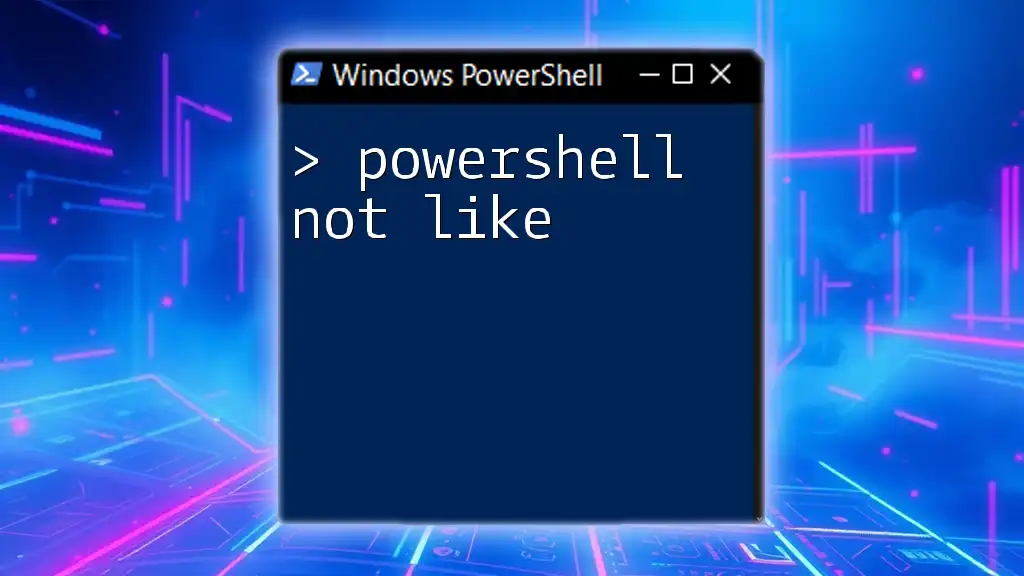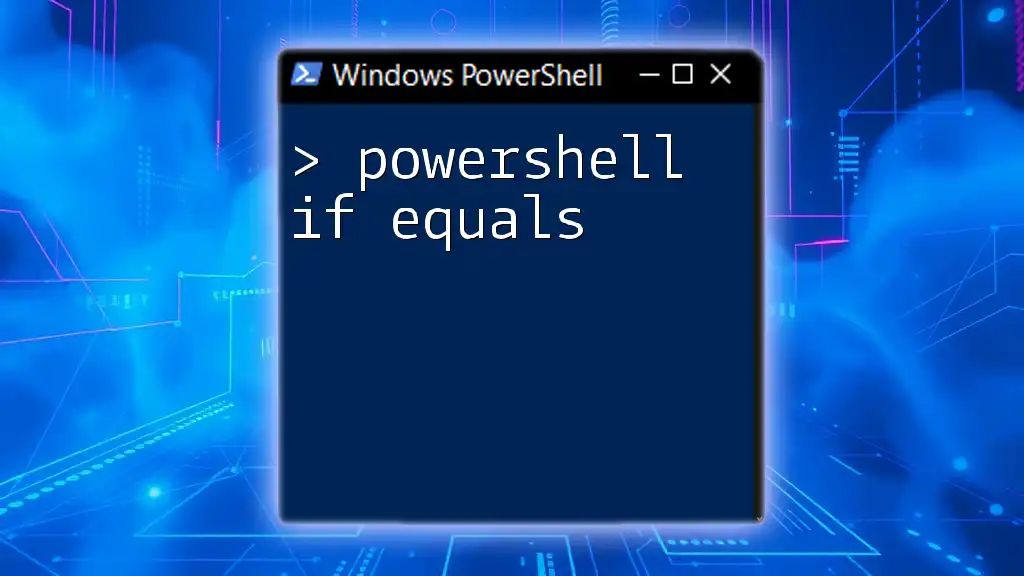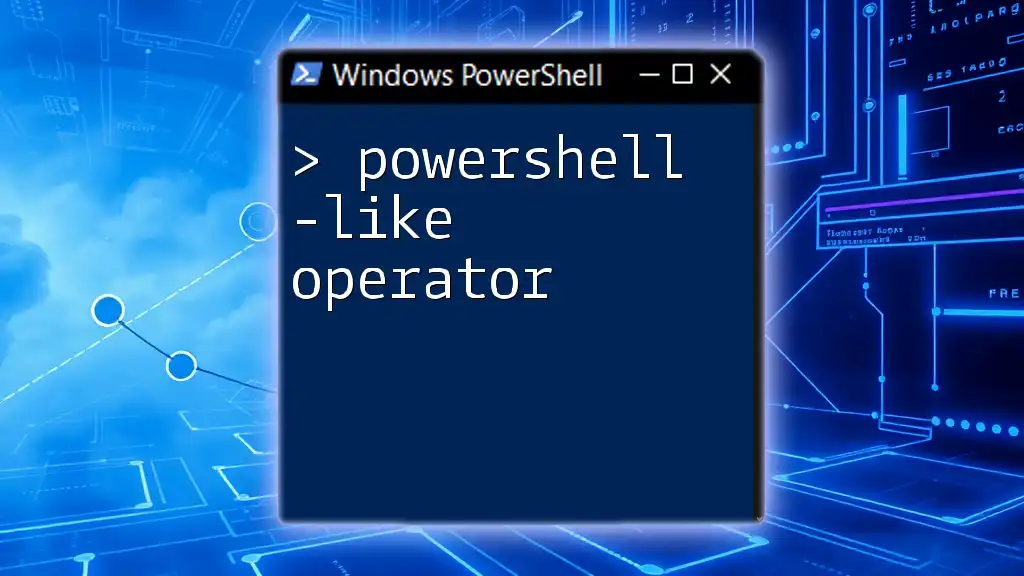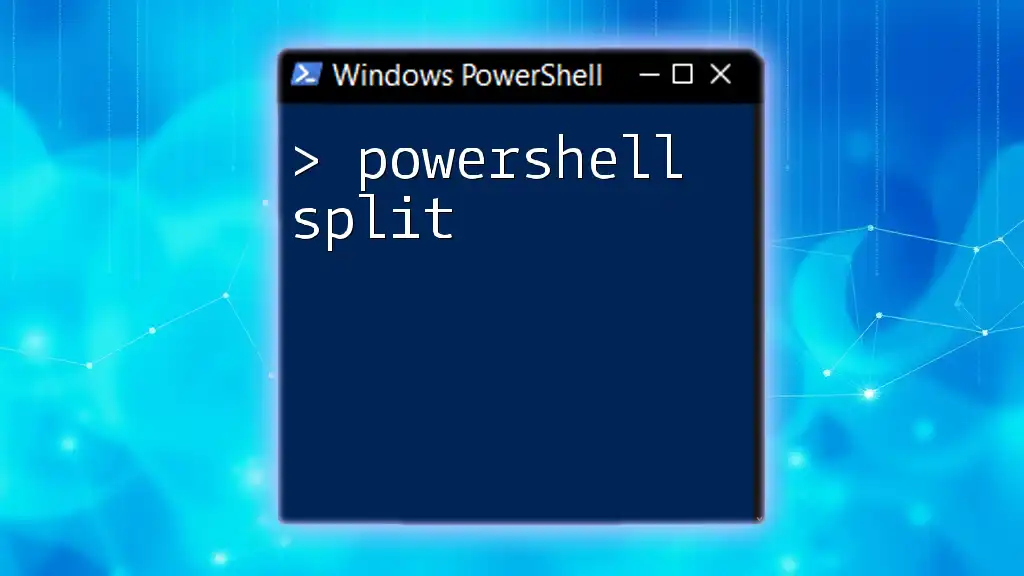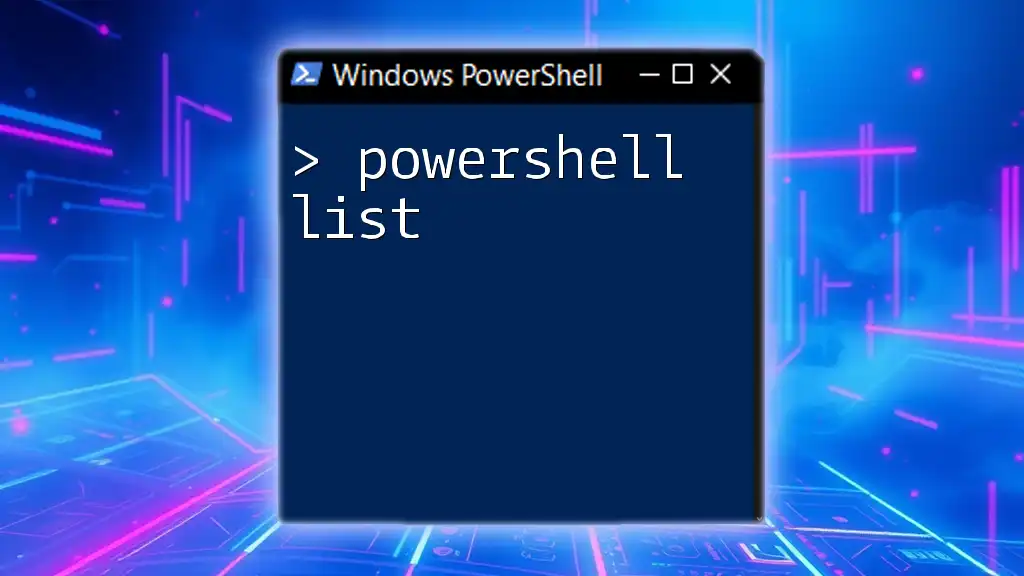In PowerShell, the `if` statement allows you to execute a block of code only if a specified condition is true, enabling you to control the flow of your scripts effectively.
if ($Condition) { Write-Host 'Condition is true!' }
Understanding Conditional Logic
What is Conditional Logic?
Conditional logic is a fundamental concept in programming that allows you to execute particular sections of code based on whether a condition is true or false. It enables decision-making in scripts and is essential for creating functions that adapt to different scenarios. Understanding how conditional statements, like the "if" statement, function in your scripts is crucial for efficient programming.
Importance of the "If" Statement in PowerShell
The "if" statement is one of the primary tools for controlling the flow of execution in PowerShell scripts. It helps programmers create dynamic and responsive scripts by evaluating conditions and executing corresponding blocks of code. When you utilize if, elseif, and else constructs, you can manage complex logic and handle various scenarios effectively.

The Basics of the PowerShell "If" Statement
Syntax of the If Statement
The basic structure of an "if" statement in PowerShell is straightforward:
if (condition) {
# code to execute if condition is true
}
This format checks the specified condition, and if it evaluates to true, the code within the curly braces will be executed.
Examples of Simple If Statements
Let’s look at a couple of simple examples to illustrate the basic "if" statement in action.
Example 1: Checking if a File Exists
Imagine you want to verify if a file is available on your system. Here’s how you can do that:
$filePath = "C:\example.txt"
if (Test-Path $filePath) {
Write-Host "The file exists."
}
In this example, the `Test-Path` cmdlet returns true if the specified filepath exists, resulting in the message "The file exists" being displayed.
Example 2: Checking a Number Condition
You can also use the "if" statement for numeric comparisons.
$number = 10
if ($number -gt 5) {
Write-Host "The number is greater than 5."
}
Here, `$number` is being compared against 5 using the `-gt` (greater than) operator. If the condition holds true, the corresponding message is printed.

Using "Else" and "ElseIf" with the If Statement
Syntax of Else and ElseIf
To create more complex logical flows, you can extend the basic "if" statement with "elseif" and "else". The syntax is:
if (condition) {
# code if condition is true
} elseif (another_condition) {
# code if the second condition is true
} else {
# code if none of the above conditions are true
}
Example with Else and ElseIf
Consider a scenario where you need to assign grades based on a student's marks. Here’s how you can achieve this:
$marks = 85
if ($marks -ge 90) {
Write-Host "Grade: A"
} elseif ($marks -ge 75) {
Write-Host "Grade: B"
} else {
Write-Host "Grade: C"
}
In this example, `$marks` is compared against thresholds for grades A and B. Depending on the score, the appropriate grade message is displayed.
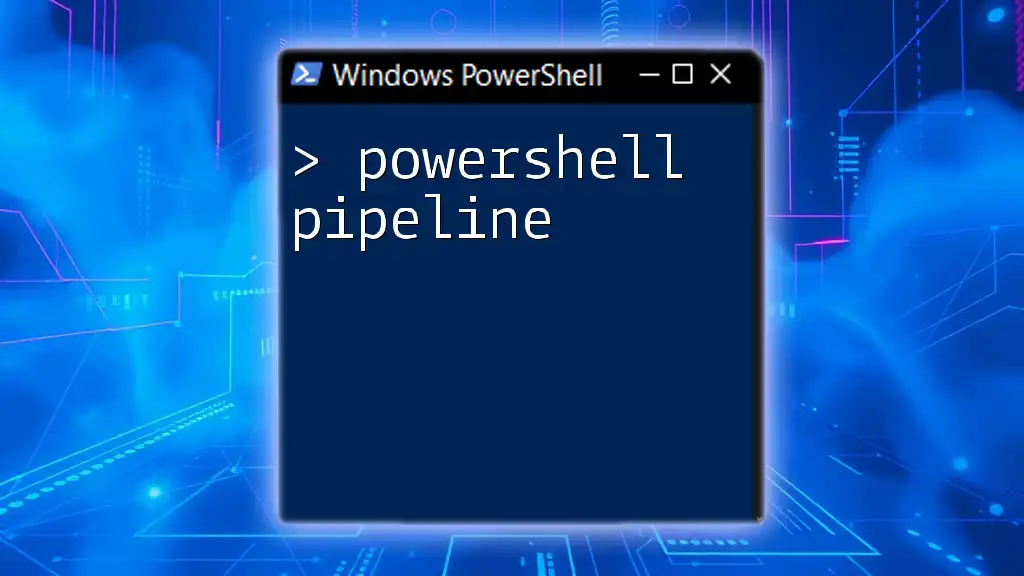
Using Comparison Operators in If Statements
Common Comparison Operators
PowerShell provides several comparison operators to evaluate conditions effectively. Some of the most common include:
- `-eq`: Equals
- `-ne`: Not equal
- `-gt`: Greater than
- `-lt`: Less than
- `-ge`: Greater than or equal to
- `-le`: Less than or equal to
Each operator serves a unique purpose, allowing for various comparisons in your scripts.
Examples Using Comparison Operators
Here’s an example that checks user input against a specific condition using comparison operators.
$input = Read-Host "Enter a number"
if ($input -eq 10) {
Write-Host "You entered ten."
} elseif ($input -gt 10) {
Write-Host "You entered a number greater than ten."
} else {
Write-Host "You entered a number less than ten."
}
In this script, the user enters a number, and based on the input, an appropriate message is displayed. This functionality is crucial for interactive scripts and user feedback.

Nested If Statements
What Are Nested If Statements?
Nested if statements allow you to evaluate multiple conditions within a single "if" statement. While they extend functionality, you should be cautious of how complex they become, as deeply nested conditions can make your scripts difficult to read and maintain.
Example of Nested If Statements
Let’s say you want to determine a discount based on both membership status and the amount of a purchase. Here’s how you can implement nested if statements:
$membership = "Gold"
$purchaseAmount = 150
if ($membership -eq "Gold") {
if ($purchaseAmount -gt 100) {
Write-Host "You get a 20% discount!"
} else {
Write-Host "You get a 10% discount!"
}
} else {
Write-Host "No discounts available."
}
In this example, the outer if checks the membership level, while the inner if evaluates the purchase amount. Depending on these conditions, the appropriate discount is communicated.
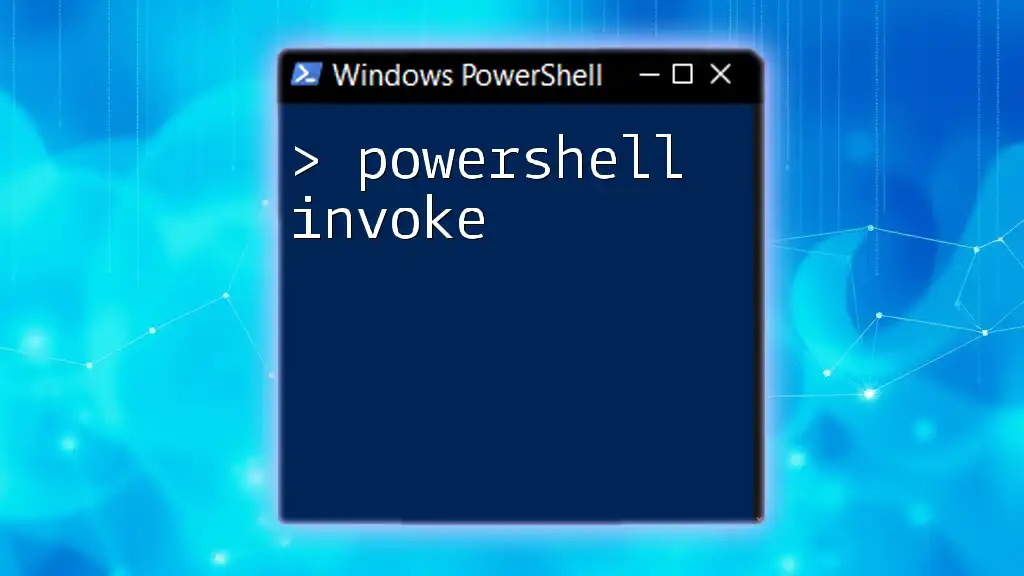
Switch Statement: An Alternative to "If"
Overview of Switch Statement
The Switch statement can be used as an alternative to "if" when you have multiple potential matches for a single variable. It’s particularly useful for scenarios with fixed values, improving readability and maintainability.
Syntax of the Switch Statement
Here's how the syntax typically looks:
switch (expression) {
value1 { # code }
value2 { # code }
default { # code }
}
Example of a Switch Statement
Consider checking a day of the week as an application of the Switch statement:
$day = "Tuesday"
switch ($day) {
"Monday" { Write-Host "Start of the work week!" }
"Tuesday" { Write-Host "Second day of the week!" }
"Friday" { Write-Host "Almost the weekend!" }
default { Write-Host "Midweek day!" }
}
Here, `$day` is evaluated against multiple conditions, and a message corresponding to the matched value is printed. This structure simplifies handling multiple conditions when compared to nested if statements.

Best Practices for Using If Statements in PowerShell
Maintainability and Readability
To create maintainable and readable scripts, limit the complexity of your conditional statements. Utilize clear and descriptive variable names, and ensure your conditions are straightforward and concise.
Avoiding Deep Nesting
Deeply nested if statements can lead to confusion and bugs in your scripts. Aim to keep your conditions as flat as possible. When complex conditional logic is needed, consider refactoring your code into functions or using the Switch statement for clarity.

Common Errors with If Statements
Errors in if statements often arise from forgetting necessary components, such as parentheses around conditions, or using incorrect comparison operators. Ensure conditions are enclosed in parentheses to avoid runtime errors.
Example of an Error: Forgetting Parentheses
For instance, the following will result in an error:
if $number -gt 5 {
Write-Host "The number is greater than 5."
}
Correct syntax includes parentheses for the condition:
if ($number -gt 5) {
Write-Host "The number is greater than 5."
}
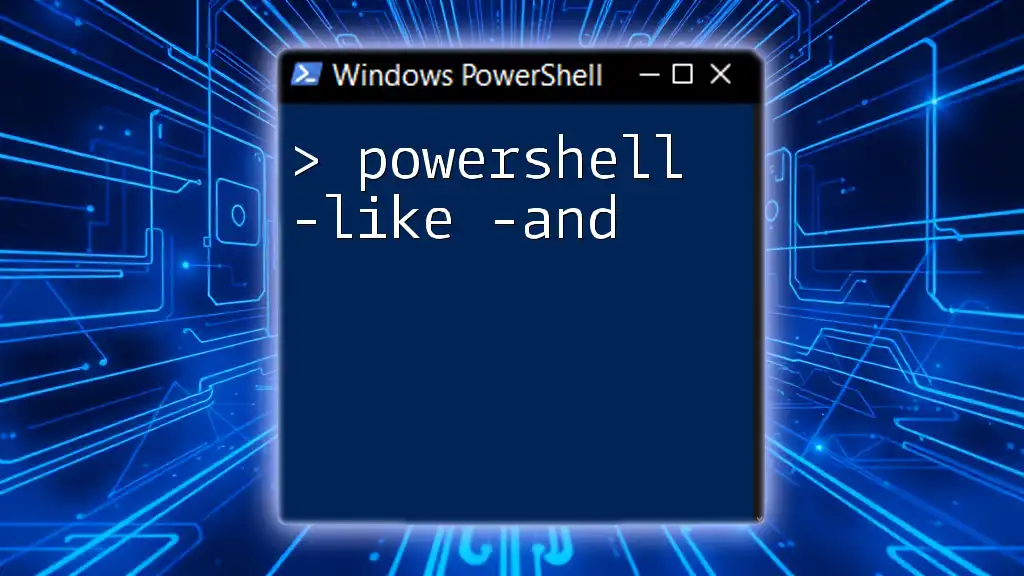
Conclusion
The "if" statement is an essential component of PowerShell that enables you to build dynamic scripts capable of reacting to various conditions. By mastering conditional logic and utilizing if statements, you can significantly enhance the functionality and responsiveness of your PowerShell scripts. As you continue exploring these concepts, keep practicing with real-world scenarios to solidify your understanding and implementation of PowerShell's "if like" capabilities.









